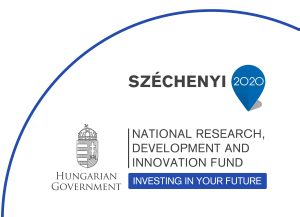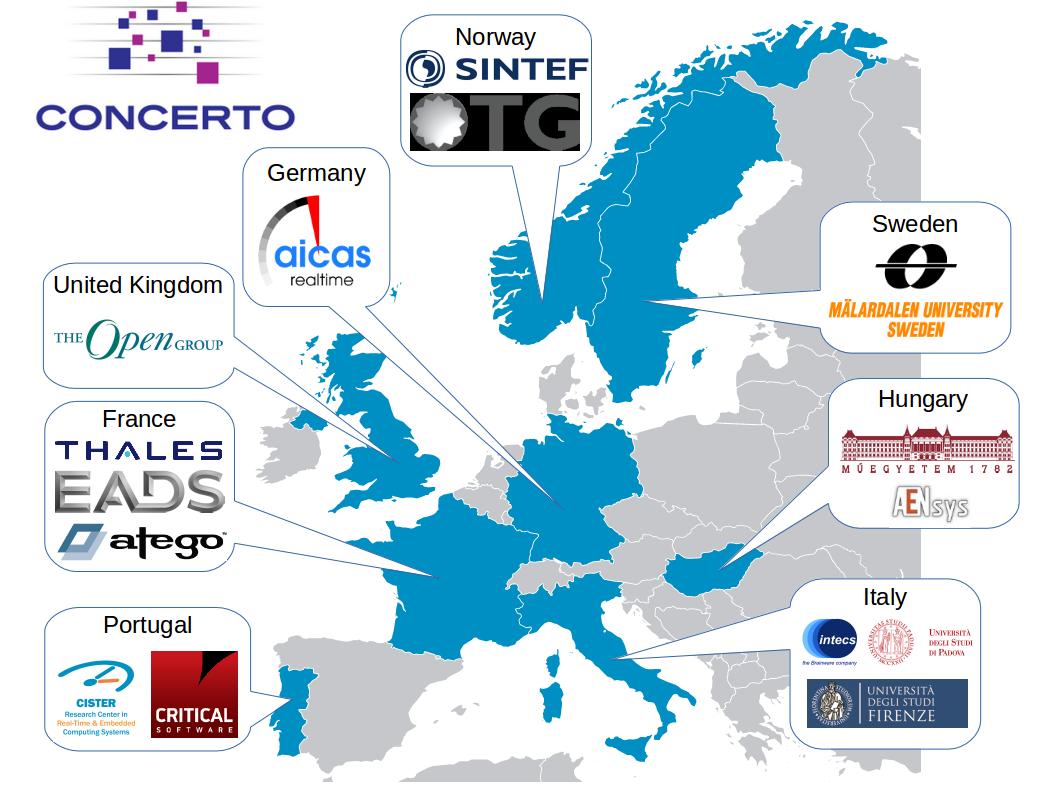CONCERTO - Guaranteed Component Assembly with Round Trip Analysis for Energy Efficient High-integrity Multi-core Systems
Project website: http://www.concerto-project.org
 (2013-2016) Emerging embedded systems platforms harnessing new heterogeneous, multi-core architectures to enable the next generation of powerful mission-critical applications are demanding across-the-board advances in all areas of design and development to fulfill their promise. The integration of component-based design with model-driven development creates a potent combination especially capable of mastering the complexity of these new systems.
(2013-2016) Emerging embedded systems platforms harnessing new heterogeneous, multi-core architectures to enable the next generation of powerful mission-critical applications are demanding across-the-board advances in all areas of design and development to fulfill their promise. The integration of component-based design with model-driven development creates a potent combination especially capable of mastering the complexity of these new systems.
|
Beneficiary: Budapest University of Technology and Economics |
 |
CONCERTO deliveres a reference multi-domain architectural framework for complex, highly concurrent and multi-core systems, where non-functional properties (including real-time, dependability, and energy management) are established for individual components, derived for the overall system at design time, and preserved by construction and monitoring at run-time.
The CONCERTO framework integrates:
- Correctness-by-construction for multi-core systems with innovative model-to-code transformation techniques targeted at their special characteristics.
- A multi-view, hierarchical cross-domain design space sufficiently rich to enable a compositional approach to the next generation of complex, heterogeneous platform architectures.
- Support for iterative and incremental development of multi-core systems through simulation and early model-based analysis, with fully automated back propagation of results to the user model.
- Hardware modeling facilities equipped to cope with the new generation of heterogeneous, multi-core platforms.
- Advances in run-time monitoring of mission- and operation-critical non-functional properties such as energy consumption on partitioned and multi-core processor architectures.
The applicability of the CONCERTO solutions to multiple industrial domains (including aerospace, telecoms, automotive, petroleum and medical) is ensured through the elaboration of representative industrial use cases.
The international consortium consisted of 15 members from 8 European countries (see the project webpage). The Hungarian partners were the Budapest University of Technology and Economics (leader of the "small consortium") and the AENSys Informatics Ltd., Szeged. Participating organisation units of BME were the Healthcare Technologies Knowledge Centre, the Department of Measurement and Information Systems, and the Department of Automation and Applied Informatics.

The Hungarian partners elicited the non-functional requirements relevant to the medical domain. Particular attention was paid to those non-functional requirements that could contribute to the certification, system performance, safety, verification and documentation, and to domain-specific requirements for the model simulation. They looked for solutions to provide seamless integration of the CONCERTO methodology into the medical, and in particular the telehealth and telecare domain with special attention to low-end medical devices used by non-specialists in the home environment. Appropriate analysis methodologies were identified for timing and analysis of subsystem behaviours, in compliance with medical system safety standards and support for certification requirements.
The medical use case run on a mobile computing platform with example patient monitoring devices, primarily as a telecare application. The CONCERTO toolset was used to evaluate the interaction between safety critical and functional aspects of the use case, partitioning between applications and timing characteristics of the system and interaction with the operating system. Qualitative and, if applicable, quantitative comparisons were made with other tools and techniques used in the medical and especially in the telecare domain. For the medical domain one of the key metrics considered was the benefit to requirement traceability and verification activities. An overall assessment of the various CONCERTO tools were provided in terms of usability, advantages, and areas for improvements.
Contact: Péter Hanák, BME EMT; Ákos Horváth, BME MIT; László Lengyel; BME AAIT, Vilmos Bilicki, AENSys.
| News and events | Publications |
